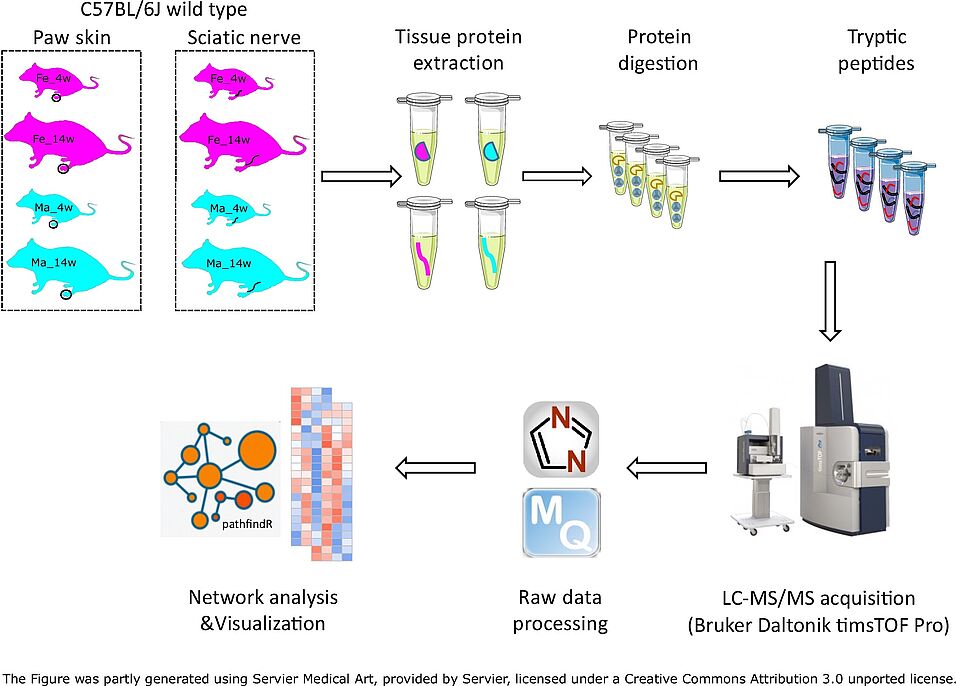Among the variables affecting experimental outcomes (molecular, morphological, physiological and behavioral parameters), the age and sex of studied mice are major confounders in preclinical studies. Despite recently enforced policies by funding agencies to include animals of both sexes, most preclinical studies still do not perform experiments on male and female rodents in parallel, and often pool animals of both sexes with a wide range of ages. These practices may negatively impact reproducibility across studies, increase data variability, conceal differences or generate artefactual results, and consequently, hamper translationally oriented preclinical research. To date, however, we lack knowledge about the molecular set-up of the somatosensory system in dependence on age and sex, in particular on the level of the proteome.
The research team of Manuela Schmidt, with first authors Julia Sondermann and Feng Xian, applied an optimized quantitative proteomics workflow using the recently purchased timstof Pro mass spectrometer (Bruker, Germany) to catalogue the protein set-up of mouse paw skin and the sciatic nerve and to compare the changes between: i) adolescents (4 weeks of age) and adults (14 weeks of age); ii) male and female wild-type C57BL/6J mice. The analysis of these tissues is of high significance as they are crucially implicated in multiple diseases including chronic pain conditions. Obtained results provided prominent evidence for hitherto unknown dynamic changes of tissue proteomes in dependence on the age and sex of mice. Notably, the team could show such dynamic changes for proteins and signaling pathways with known relevance for (patho)physiology such as homeostasis and epidermal signaling in skin and, in sciatic nerve, regulators of myelination and neuronal development. These data are highly valuable for facilitating in-depth and reproducible preclinical research studies.
Original publication
Xian, F., Sondermann, J. R., Gomez Varela, D., & Schmidt, M. (2022). Deep proteome profiling reveals signatures of age and sex differences in paw skin and sciatic nerve of naïve mice. eLife, 11, e81431. https://doi.org/10.7554/eLife.81431


